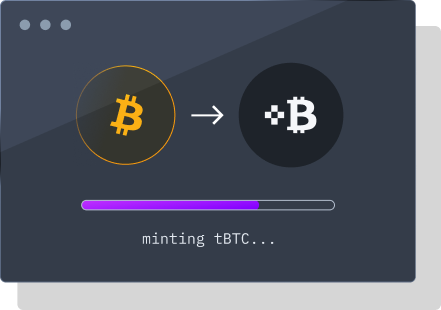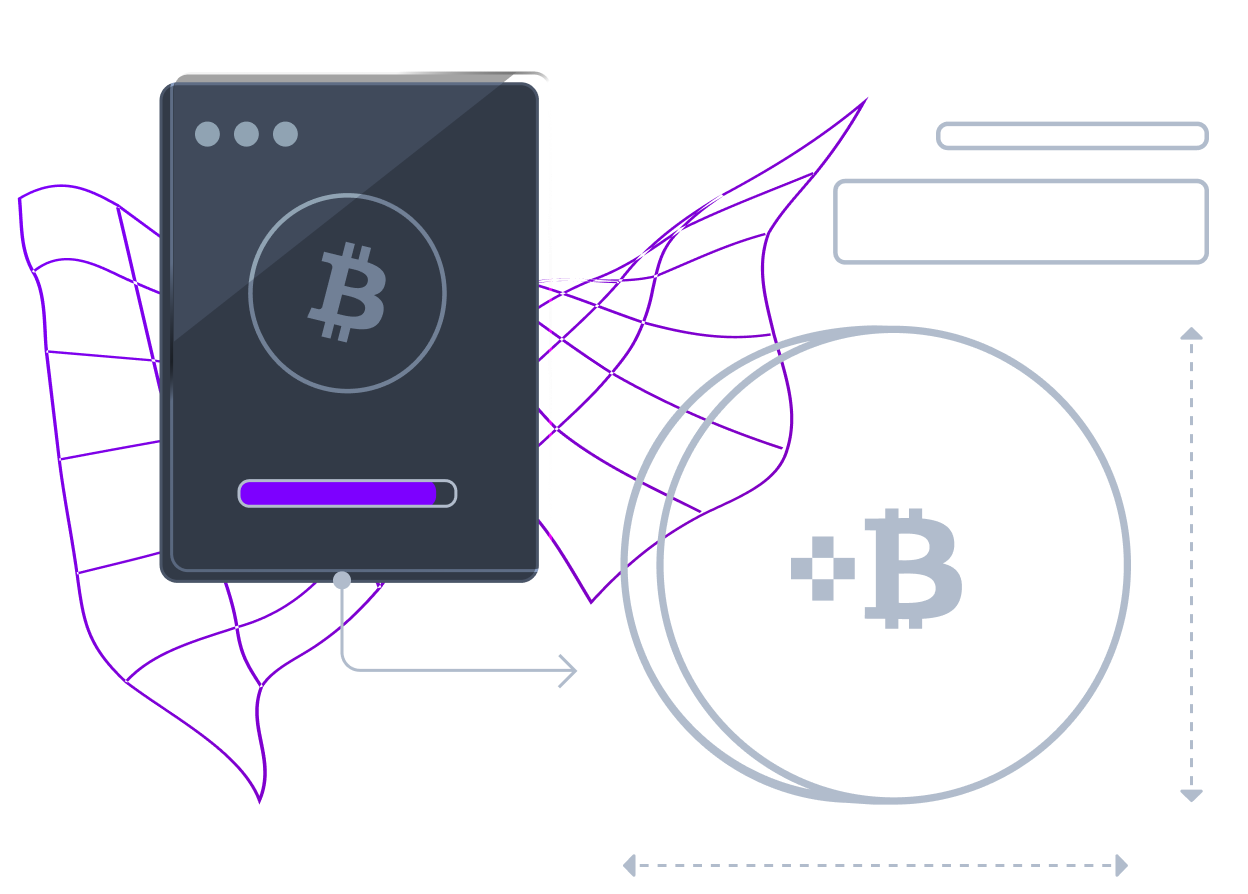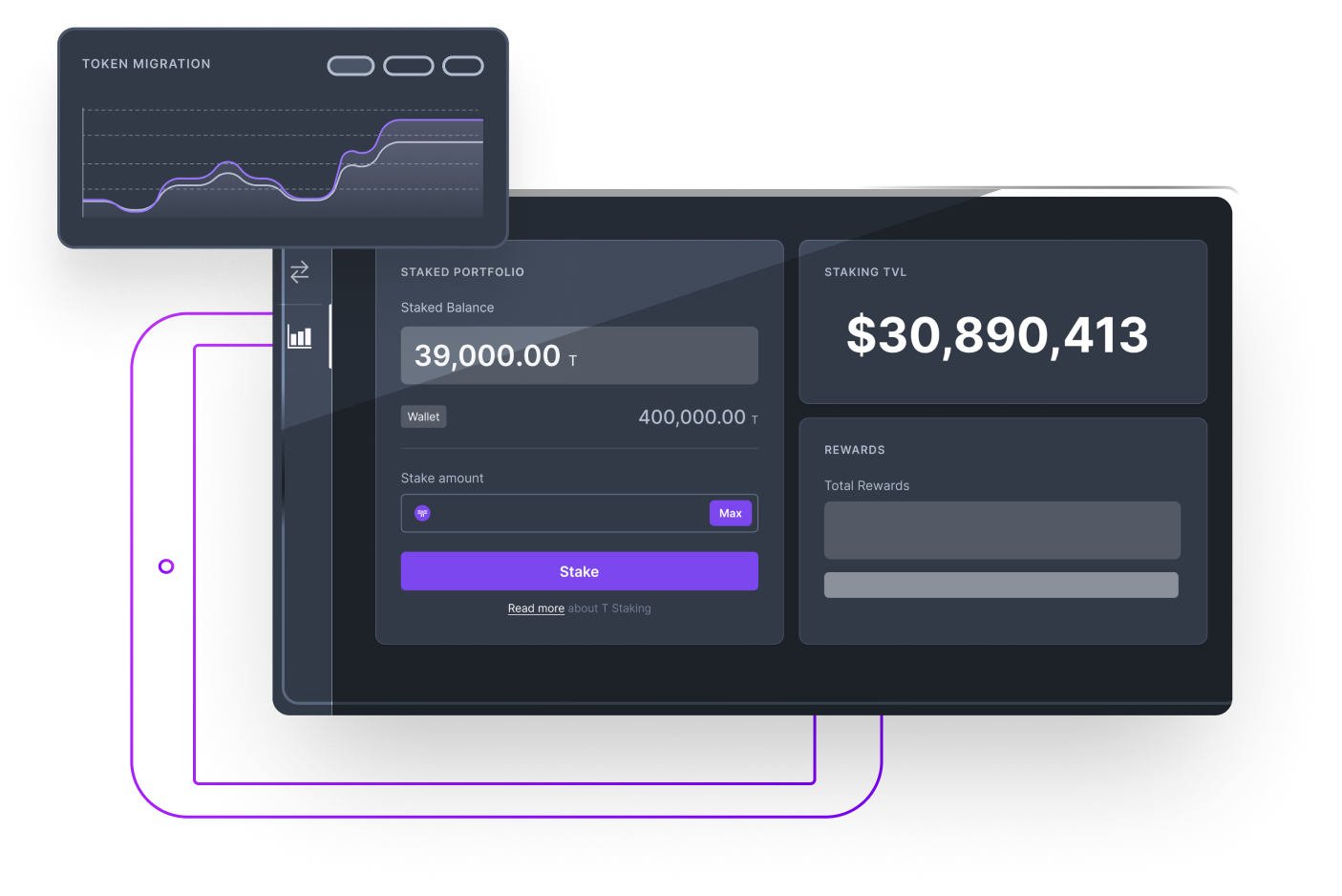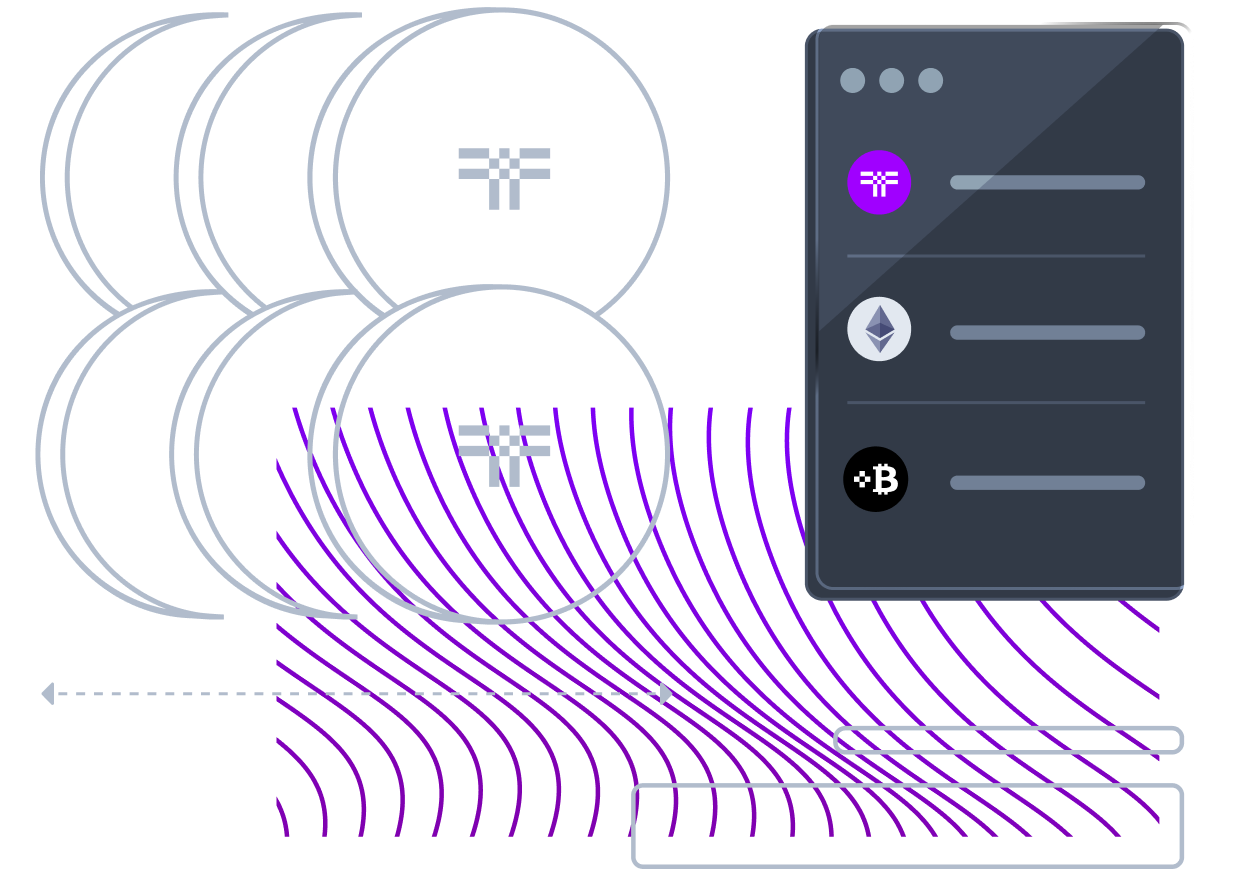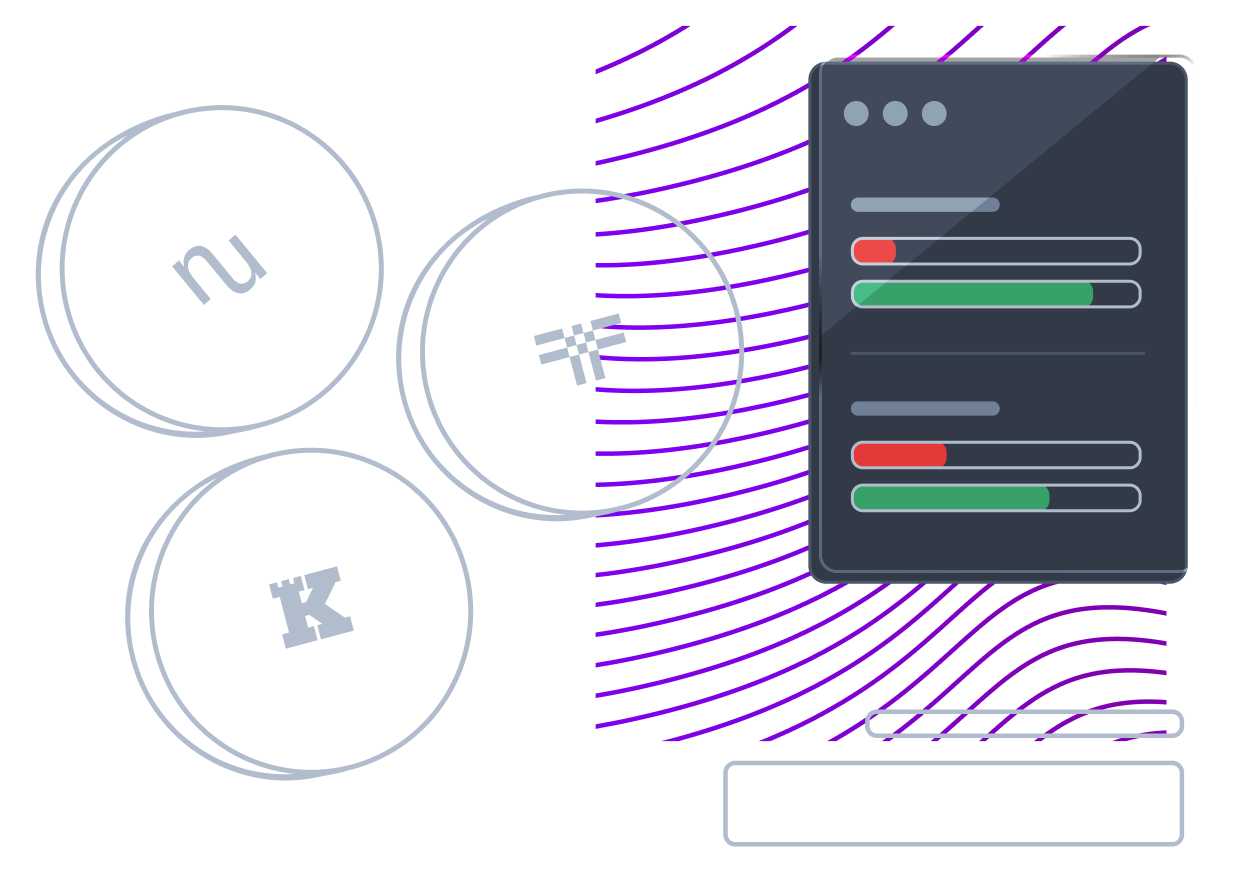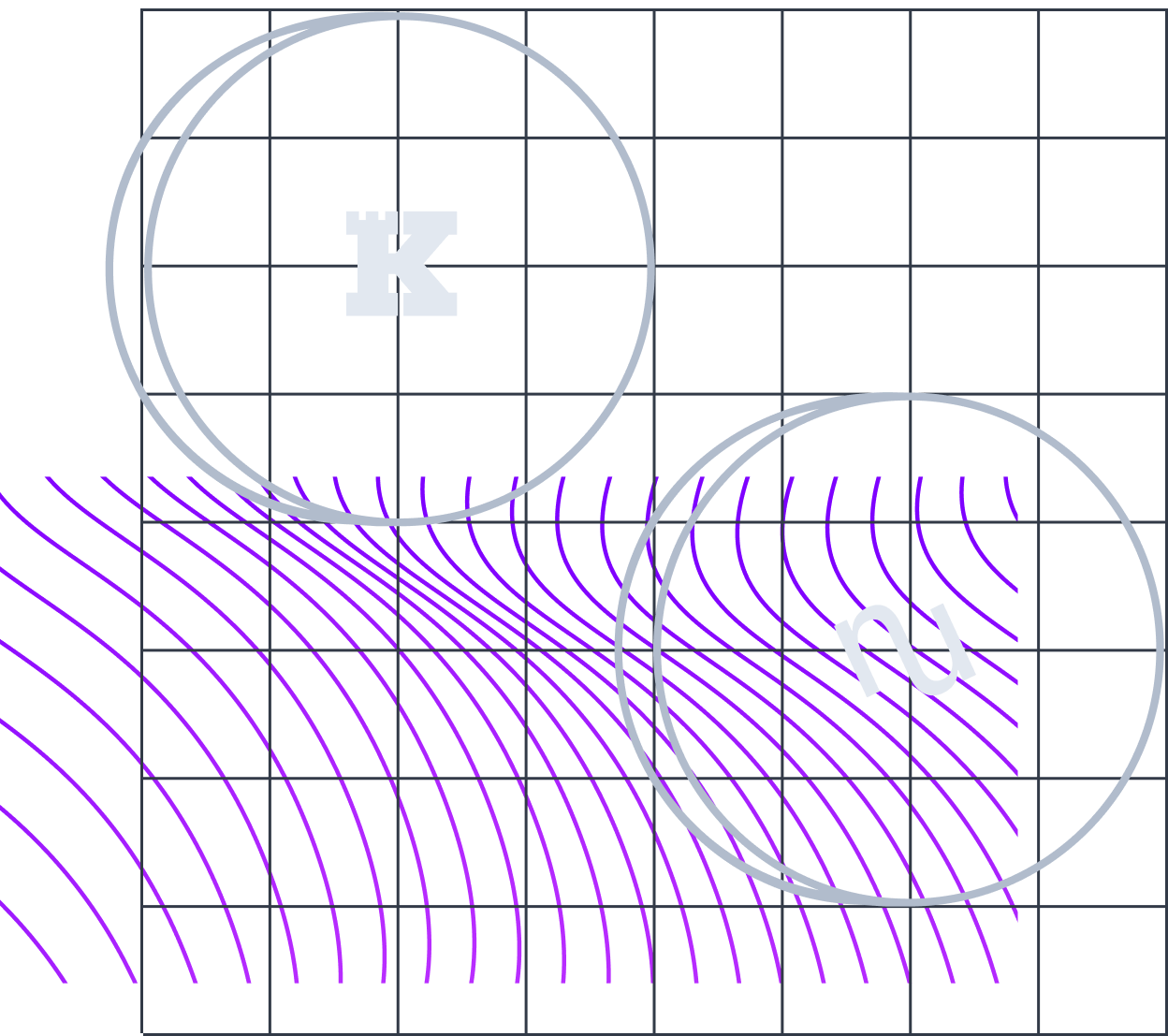TIP 54: tBTC & T, better together
Jul 2023 · mhluongo
# Summary
I propose a **[buyback-and-make](https://www.placeholder.vc/blog/2020/9/17/stop-burning-tokens-buyback-and-make-instead)** model to link the successes of T and tBTC, as well as an updated tBTC v2 fee program to optimize for growth.
* All tBTC fees should be used to buy into an 80/20 T/tBTC pool.
* Minting fees should be reduced to 0.1%, maintaining the redemption fee rate of 0.2%.
* Minting fees should be rebated in T, according to a volume-weighted schedule similar to those of popular exchanges.
* Initial rebate budget of 13M T, which will be made up for in tBTC fees.
* For users, the lower fees and rebates incentivize volume.
* For the network, these mechanisms allow us to grow protocol-owned liquidity (POL) and accrue further value.
# What’s the relationship between tBTC and T?
Today, the answer is straightforward, even if it’s not very satisfying.
On the T side, T stakers power the decentralized custody required for tBTC. Doing this yields around 15% of their staked principal every year, denominated in T. T holders pay for this service in inflation: thanks to our stable yield staking model, at today’s staking rates, this means [~3.82%](https://forum.threshold.network/t/tip-53-mint-470m-threshold-work-tokens-for-dao-to-distribute-per-the-stable-yield-model/632) inflation to the total T supply every year.
On the tBTC side, users are charged a 0.2% fee every time BTC is deposited or redeemed. These fees go to the Threshold DAO, which is governed by T holders. The DAO can decide to do whatever they would like with these fees.
With redemptions launching eminently, we need to clarify what tBTC can do for T, and how they can grow together.
# When tBTC wins, T should win
We’re growing, and as these deposit and redemption fees accrue in tBTC to the Threshold DAO, the question of what to do with the proceeds arises.
Should the tBTC earned go to stakers? Or should it be used to buy back and burn T? Both, I believe, are short-sighted.
The decision to decouple staking rewards from user fees has been a huge win for tBTC v2. In v1, the security of the system relied on the prices of BTC and ETH. Governance had little ability to stimulate either side of the user / staker market, making growth and security difficult to manage — and ultimately preventing tBTC v1 from growing beyond 2,000 BTC in TVL.
In v2, the separation of staking rewards and user fees means the DAO can stimulate both sides of the market independently. If we need more stakers, we can raise yield. If we need more deposits or redemptions, we can lower fees or offer rebates from the treasury.
I don’t think we should go back to the old, inflexible model. Instead, I think we should align the success of tBTC with the success of the Threshold Network.
## Buyback and Make
I propose that all accrued tBTC fees be periodically single-side deposited into a T/tBTC pool, effectively buying back T.
As tBTC fees grow, more and more T is bought back and locked in an DAO-owned LP position. These periodic buybacks will take T off the market, deepen T and tBTC liquidity, and further tie the successes of tBTC and T.
The pros and cons of this model, called “buyback and make”, are well covered by [Joel Monegro at Placeholder](https://www.placeholder.vc/blog/2020/9/17/stop-burning-tokens-buyback-and-make-instead).
Creating a deep T/tBTC pool doesn’t only create stronger liquidity for the pair… it also becomes another revenue stream for the DAO. The [Curve T/ETH pool](https://curve.fi/#/ethereum/pools/teth/deposit) is projected to earn 46% APR next epoch, while the [Balancer T/WETH](https://app.balancer.fi/#/ethereum/pool/0x8167a1117691f39e05e9131cfa88f0e3a620e96700020000000000000000038c) pool earns 9.7-15.75%.
### Venue & Implementation Details
All else being equal, I believe an 80/20 T to tBTC pool on mainnet would best achieve this goal. In an 80/20 pool, each 1-sided tBTC deposit buys 0.8 tBTC worth of T, rather than 0.5 in a traditional 50/50 pool.
That said, the details of our current treasury matter, including our accrued voting power in the Curve, Balancer, and other ecosystems, as well as integrations with major aggregators like 0x and 1inch.
# Optimizing for growth
Fee proceeds are exciting! They mean users genuinely want to use the protocol, and pay for the privilege.
We are, however, in a unique position in the history of tBTC. As the redemptions upgrade launches on mainnet, we will have shipped the only decentralized, 2-way BTC bridge on Ethereum [0].
The market today is very different from tBTC v1’s launch in 2020. Most competing projects have died off, either quietly or loudly, in a DINO extinction event [1]. We haven’t — we’re still here, and we haven’t sacrificed our values. Now is our opportunity to flourish.
As depositors have [tested the waters](https://dune.com/threshold/tbtc) with tBTC v2, we’ve consistently heard two things.
* They want redemptions enabled, ASAP.
* They want to deposit directly to other chains.
* They want lower deposit fees.
Redemptions [are launching eminently](https://twitter.com/mhluongo/status/1679893872288071680), and the cross-chain UX work is happening as we speak… now feels like a great time to address deposit fees.
## Should tBTC include a deposit fee?
One way to make depositors happy is to remove deposit fees outright.
I’ve not been quiet about my feelings here, but I’ll repeat them for anyone who hasn’t heard my rant on Discord or Telegram.
I’m staunchly against 0-fee deposits.
The reason is simple: once people get used to paying $0 for something, it’s hard to go back.
You see this time and time again in the traditional economy. When a free service or perk is taken away, customers are outraged. The cognitive bias, called [loss aversion](https://thedecisionlab.com/biases/loss-aversion), is a well-known and documented part of human nature.
When a company changes a pricing plan for a popular product, this is the effect they’re trying to avoid. Loss aversion can lead to outrage and even boycotts, giving competitors an opportunity to siphon customers.
Our DAO isn’t a company, and the tBTC protocol isn’t your typical product. Nevertheless, we want to avoid such issues down the road. For me, that means never setting a user-facing fee switch to 0.
Still, we need to be competitive with other solutions in the space like WBTC. And for that reason, I propose we introduce two changes to tBTC’s fee model today.
## Lower the deposit fee
First, I propose we lower the deposit fee to 0.1%.
I believe the opportunity for becoming the #2 BTC in DeFi is a closing window. We need to seriously grow and get loud to make sure tBTC is the permissionless choice for bridgers, and the rising star to replace WBTC — before the next bull market.
In prior discussions, I’ve heard people suggest deposit fees of 0.03-0.07% as more appropriate. They might be right, but we won’t know until we have more data — and the only comparable we have now is [WBTC’s tiered fee structure](https://blog.coinlist.co/improving-our-wrapped-bitcoin-wbtc-and-wrapped-filecoin-efil-fee-schedule/). Starting with a more conservative 0.1% gives us a chance to find the right price point to maximize revenue and overall adoption, while still consistently undercutting WBTC.
Note that this proposal leaves the default redemption fee of 0.2% intact. So far, user discussions have suggested that depositors and redeemers are distinct user segments, and that many redeemers are either seeking a particular kind of arbitrage, or just want to make sure the bridge works both ways before they deposit. Once redemptions are live, we’ll have more data for a further discussion.
## Fee rebates
Second, I propose we launch a fee rebate program, enabling rebates on deposit and redemption fees.
The basic idea is simple. As users pay fees in tBTC, they are eligible to receive a full or partial rebate in T every 30 days. This rebate can show up in the tBTC minting and redemption sections of the dApp, allowing users to better estimate the true cost of using the system. Rebates can be delivered via a published merkleroot and the dApp, and shown as accruing rewards through the month, similar to how T staking works today. Eligible claimants will have 30 days to claim their rebate.
A fee rebate mechanism gives the DAO all the levers it needs to optimize tradeoffs between revenue and growth in real time, as well as a tool for various co-marketing initiatives with other projects in the space. In the future, this same mechanism could be used to make deposit or redemption fees net-negative to supplement other POL efforts, or to power on-chain giveaways to depositors.
The initial rebate function I propose is simple, incentivizing deposits to grow TVL.
|30-day volume (deposits + redemptions)|Deposit fee rebate|Redemption fee rebate|
| --- | --- | --- |
|Up to 1 BTC|0%|0%|
|1 to 10 BTC|10%|0%|
|10 to 100 BTC|25%|0%|
|100 to 1000 BTC|50%|0%|
|1000+ BTC|75%|0%|
I propose an initial 13M T budget for the fee rebate program — enough T to cover deposit fees on up to 10k deposited BTC.
### An Analogy
Another way to look at the rebate program is as an alternative to the existing bond program, as detailed in [TIP 47](https://forum.threshold.network/t/tip-47-liquidity-bootstrappening-part-2-pcv-governor-bravo/577). Charging fees and offering rebates ensures the DAO can further diversify the treasury and build protocol-owned liquidity (POL). Having separate fee and rebate levers means each can be adjusted up and down relative to market appetite.
# The role of the Treasury Guild
The Treasury Guild (TG) have shown themselves to be great stewards as well as liquidity specialists.
I propose that they take over the implementation of the buyback-and-make program, with explicit goals to
* Ensure periodic, automated purchases of T/tBTC with accrued tBTC fees to give other market participants confidence.
* Minimize manual multisig interactions, lessening the impact of any censorship.
The TG is also well-positioned to recommend tBTC fee changes or alternative rebate function as the market shifts. I propose that they recommend fee and parameters to the DAO on a roughly quarterly basis, as well as publishing fee rebate merkle roots each month. They should also be given the flexibility to change rebates more often as long as they stay within the proposed budget, allowing them to eg incentivize minting as part of launches and co-marketing campaigns.
# Voting
Putting this proposal together, one piece of feedback I received was that this sounded like two proposals.
Fair enough. I decided to propose the two ideas as a package deal, since both are focused on tBTC fee streams into the treasury, and how those fees impact T.
If we're concerned that the package deal is divisive, or otherwise a problem for governance, I believe both of these ideas would do fine as separate votes. I'll leave that decision to our governance coordinator.
## Footnotes
[0] - since tBTC v1 in its heyday.
[1] - Decentralized In Name Only, [coined by our very own MacLane Wilkison](https://twitter.com/MacLaneWilkison/status/1542909969384759297)
